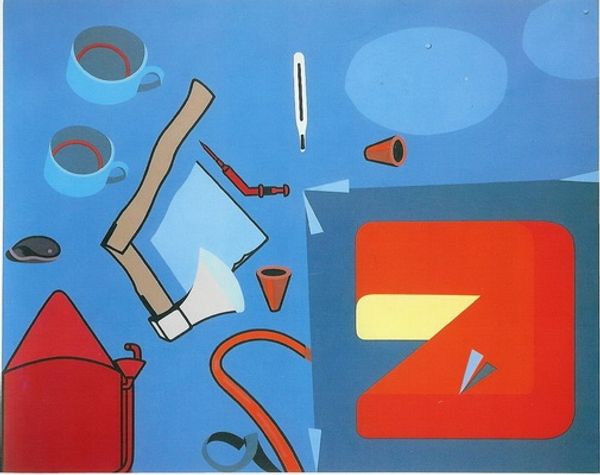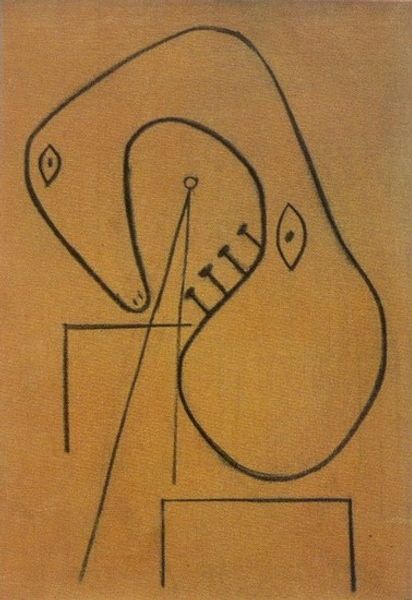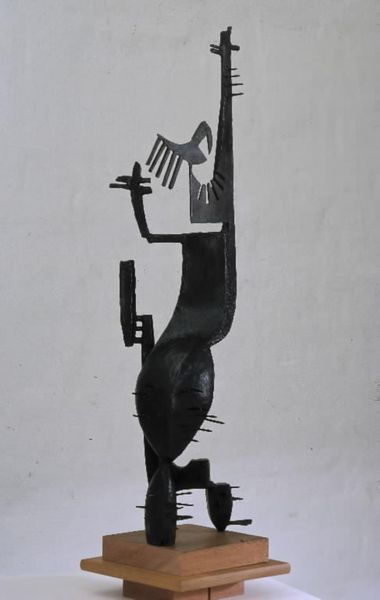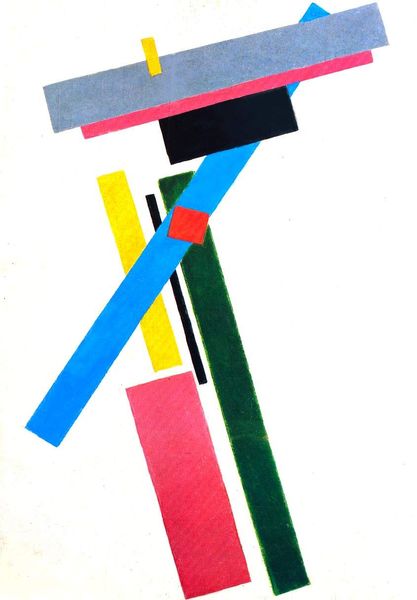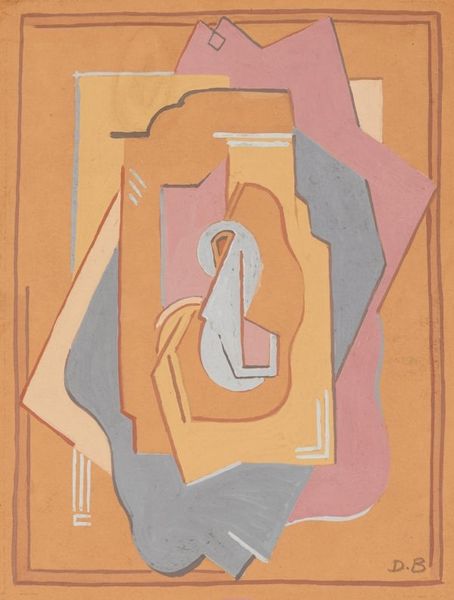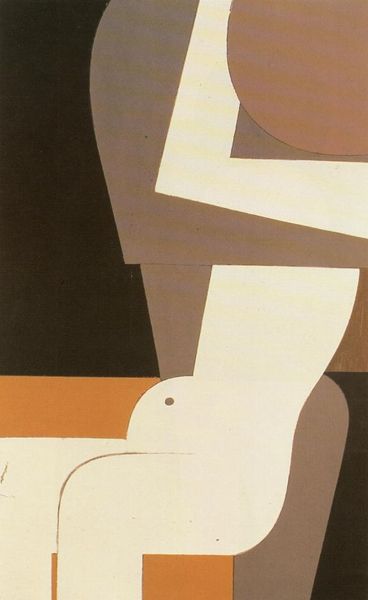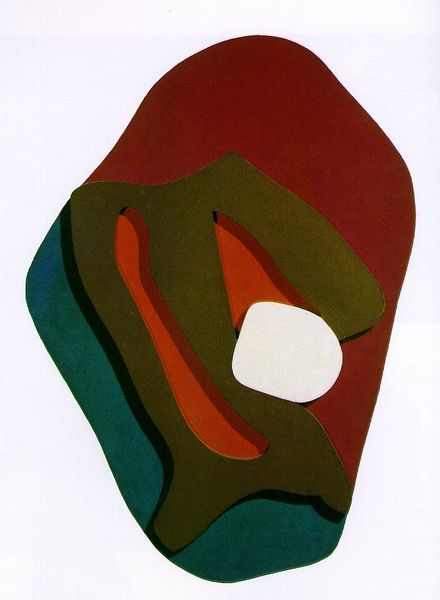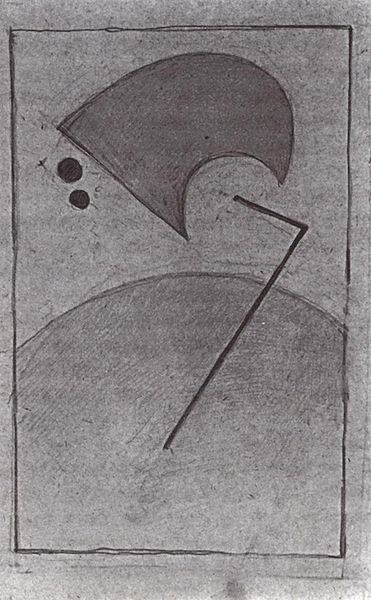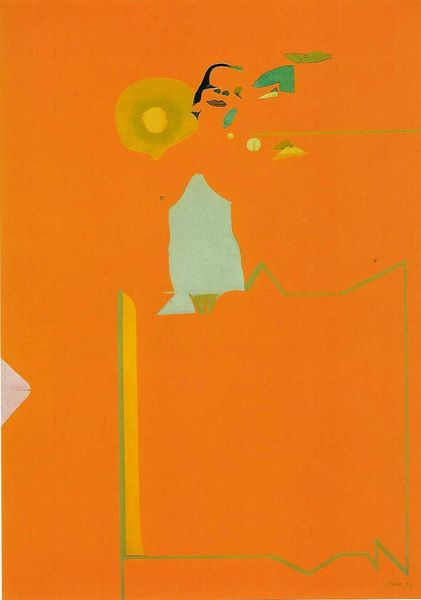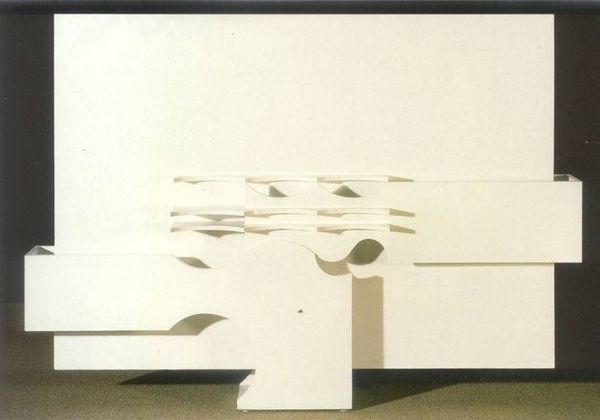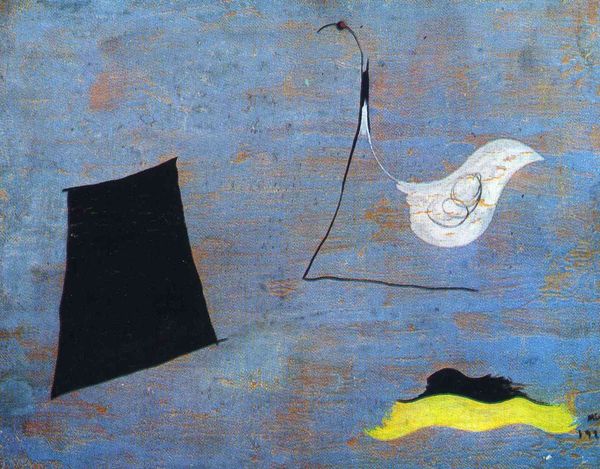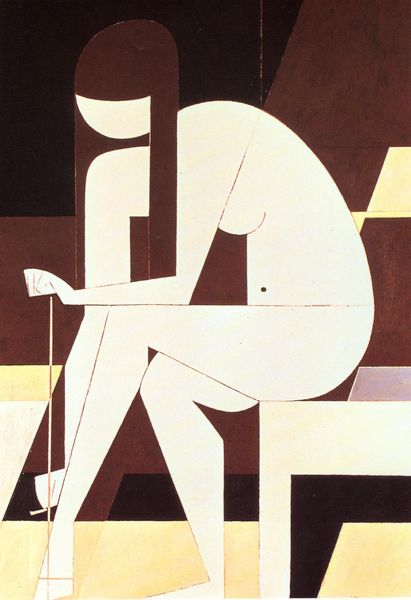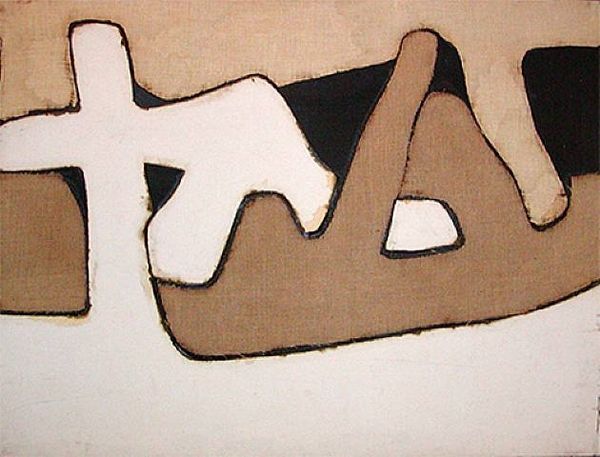
acrylic-paint
#
acrylic-paint
#
geometric
#
abstraction
#
modernism
Dimensions: 50.8 x 40.64 cm
Copyright: Gene Davis,Fair Use
Curator: Gene Davis' "Composition I" from 1949 strikes me as simultaneously playful and enigmatic. What are your initial thoughts on it? Editor: It's intriguing. There is a starkness in the colour choices. It feels almost like a mechanical blueprint stripped of its purpose. I want to understand how this was made, what kind of materials influenced the final product. Curator: Well, considering Davis' involvement with the Washington Color School later in his career, we can see the seeds of his fascination with pure color here. Note how the shapes aren't trying to represent anything literally. It's about the relationships between them, the push and pull of forms in space. We might even try to decipher semiotic significance to such abstract arrangement. Editor: Semiotics aside, the visible texture indicates the use of acrylic paint, yet applied in thin, almost diluted layers. I am interested to know how this impacts the support of the piece itself and the artist’s deliberate use of such materials so early in their adoption into the art world. The materiality here almost belies its intended impact. Curator: Absolutely. Consider the weight those individual lines possess. They almost seem self-referential, a vocabulary being formed. The painting demands we acknowledge its own internal logic, the aesthetic game it's playing. It almost touches on a commentary of modernism. Editor: I can’t help but look at how the geometric forms contrast with what appears to be hand-painted texture in the background and the obvious, but also deliberately simplified use of form that attempts to hide the creation processes. Davis may want the observer to focus on the relations, but not to divorce the artwork from its grounding and means. Curator: A solid reading. To summarize, the work challenges our perceptions. It's not about recognizing, but about experiencing a unique visual language. Editor: I'd argue the real discovery is understanding that the choices surrounding the physical act of the creation deeply reflect the artist’s own perspectives about composition and production, not just arrangement.
Comments
No comments
Be the first to comment and join the conversation on the ultimate creative platform.
